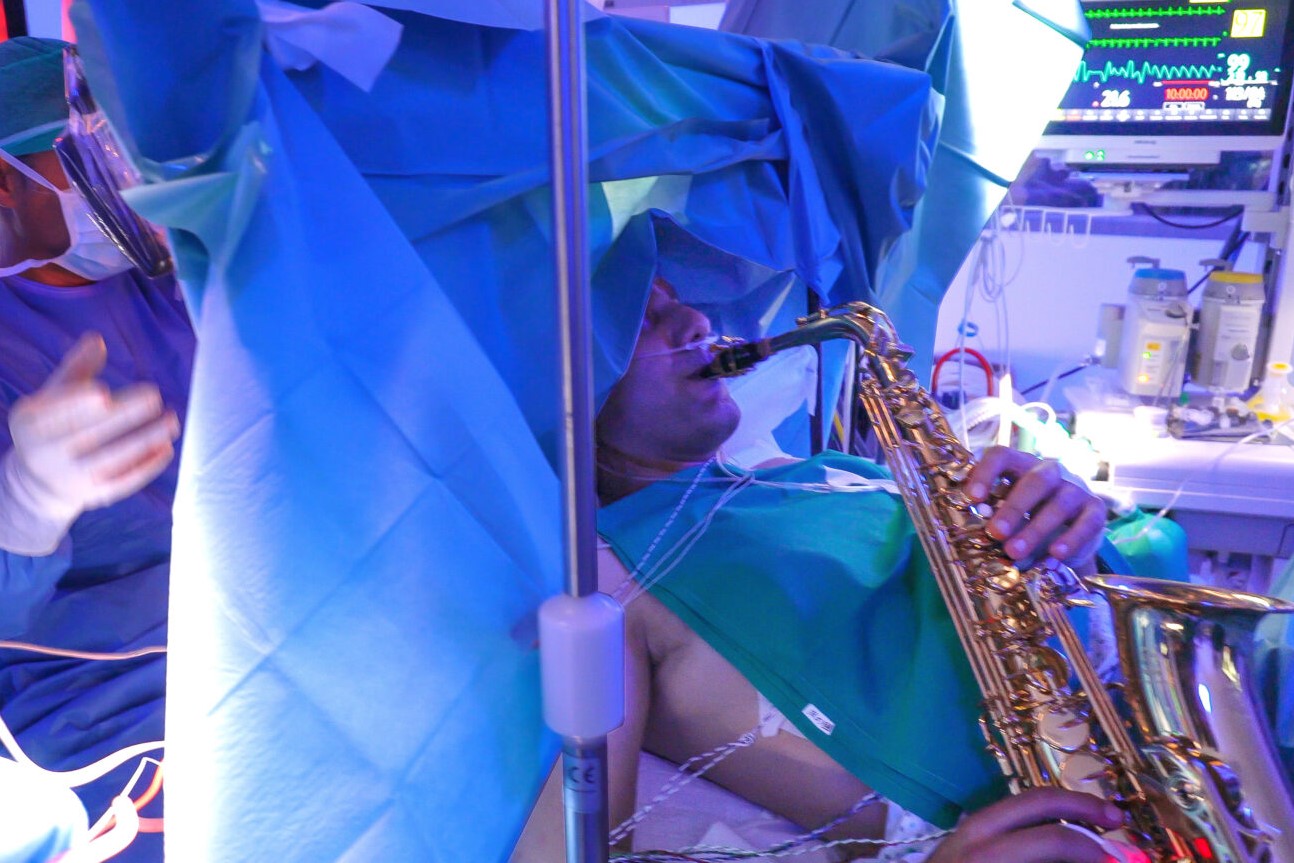
In Rome, a 35-year-old man operated on for a brain tumour while awake while playing the saxophone
Rome, unusual operation for brain tumour. The neurosurgeon: ‘The preparatory course and the choice of the tailor-made team are crucial’
A 35-year-old man operated on for a brain tumour while awake while playing the saxophone, and left-handed to boot, further complicating the challenge
It happened on Monday in Rome at the Paideia International Hospital and today, four days after the operation, G.Z. (these are the patient’s initials) has already been discharged and returned home.
A foreigner but Roman by adoption, the 35-year-old music enthusiast is well and speaks of the operation, recounting the peace of mind he felt during those hours.
“The architectural complexity of the brain and its remarkable plasticity make each of us very different from one another.
Every brain is unique, as is every person, and this means having to implement a surgical, personal and team strategy that is very focused on the patient himself,” explains Christian Brogna, Paideia International Hospital neurosurgeon, international expert in complex tumour surgery and awake neurosurgery, who led the team.
“The patient was operated on under local anaesthesia, remained quiet during the entire operation and could play and talk with us all the time.
The fact that he was playing allowed us to test and map his brain to a very large complexity of functions,’ says Brogna.
Playing, in fact, also means co-ordinating hand movements, speaking, counting, remembering – in other words, using very high neurocognitive functions.
Awake neurosurgery makes it possible to map the neuronal networks underlying the different brain functions with extreme precision during surgery.
The goal of this type of surgery is to remove the brain tumour or a vascular malformation such as cavernomas located in specific areas of the brain, while preserving the patient’s quality of life’.
Indeed, G.Z.’s brain tumour was completely removed without affecting his neurological functions.
This is one of the first operations of such complexity performed in a private facility.
BRAIN TUMOUR, THE ROUTE TO THE OPERATION
“To get to perform this type of surgery,” the neurosurgeon continues, “the path is very long and made up of two fundamental phases: the preparation of the patient and the choice of the team.
First, several interviews are held with the patient because you have to get to know him well, you have to know his wishes, aspirations, expectations.
Then,’ continues Brogna, ‘once you know the patient perfectly well and the neuropsychologist has carried out appropriate tests to assess all the brain domains, you move on to organise the team, which must be the most suitable for the patient. In this case, I personally chose the most suitable people for the operation, calling on the best international professionals’.
The operation, which lasted more than 9 hours, was performed by a multidisciplinary team of more than 10 professionals from all over the world, including neurosurgeons, dedicated anaesthetists, neuropsychologists, neurophysiologists and engineers, supported by state-of-the-art technologies such as neuronavigation with tractography, ultrasound suction, intraoperative ultrasound, and continuous neuromonitoring.
In addition, a specific tracer was used for the tumour cells that made them more easily distinguishable from the surrounding healthy tissue.
“Every awake surgery,” concludes Brogna, “not only allows us to achieve the best result in terms of removing the pathology, but is a real breakthrough.
It gives us a window into the functioning of this fascinating, but still in many ways mysterious organ that is the brain’.
Read Also:
Emergency Live Even More…Live: Download The New Free App Of Your Newspaper For IOS And Android
Brain Tumours: Symptoms, Classification, Diagnosis And Treatment
Monitored Anaesthesia: What It Is And When To Use Conscious Sedation
Pediatric Brain Tumors: Types, Causes, Diagnosis And Treatment
How Does Loco-Regional Anaesthesia Work?
Brain Tumours: CAR-T Offers New Hope For Treating Inoperable Gliomas
CAR-T: An Innovative Therapy For Lymphomas
What Is CAR-T And How Does CAR-T Work?


